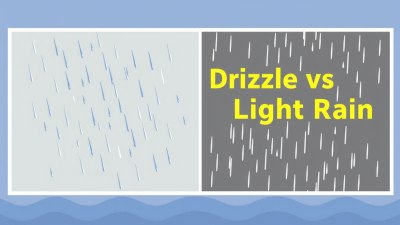Why a Hat Feels More Meaningful When There's a Breeze
Explore why hats evoke stronger feelings and sensations when worn in the breeze, enhancing comfort and emotional connection.

Wearing a hat on a calm day versus wearing one when there's a breeze can feel like two completely different experiences. The gentle touch of a breeze enlivening the fabric, a subtle coolness at the temples, or the soft movement of the brim can lend a hat more character, making it feel not just like an accessory but a meaningful extension of oneself. But why does this phenomenon occur? Why does a hat feel more meaningful when there's a breeze? This article delves deeply into the sensory, psychological, cultural, and environmental factors that contribute to this unique sensation.
The Sensory Interaction Between Hat and Breeze
At the most immediate level, the interaction between a breeze and a hat enhances the sensory experience dramatically. Our skin and scalp are finely tuned to detect subtle changes in temperature and movement. When a breeze brushes across the surface of a hat, the fabric responds by shifting slightly, creating gentle movement that our eyes and hands can perceive. This slight mechanical stimulation increases our tactile engagement with the hat, making it feel alive and responsive rather than static and inert.
The airflow can also cause temperature modulation. Even on a warm day, when body heat might make wearing a hat feel stifling, the breeze introduces cooling, which is channeled through and around the hat. This cooling effect is not just a physical comfort but often goes unnoticed yet significantly affects how pleasurable it is to wear the hat. The fabric of many hats, especially straw, linen, or cotton, interacts with air currents in a way that enhances ventilation, allowing for better heat dissipation and refreshing the scalp. This refreshing sensation transforms the hat from a simple protective gear to an enjoyable, even cherished, object.
Psychological Associations and Emotional Impact
Beyond the purely physical, there is a profound psychological component to why a hat feels more meaningful in a breeze. Many people associate breezy conditions with freedom, movement, and the outdoors—feelings often linked to relaxation and enjoyment. When a breeze moves a hat, it evokes those associations vividly. The hat turns into a symbol of these positive experiences, and our minds naturally link the physical sensation with the emotional uplift.
There is also a sense of playfulness brought about by the breeze. For instance, the light tug of wind might cause a wide-brimmed hat to tilt or sway slightly, inviting the wearer to adjust it or feel the response consciously. This dynamic interaction fosters a conscious awareness and mindfulness of the hat’s presence—not merely as a passive item worn out of necessity but as an object worthy of attention and care.
Cultural Significance of Hats in windy settings
Culturally, hats have long been associated with protection against the elements—sun, rain, and wind. Historically, hats were indispensable to outdoor lifestyles, especially in regions with windy climates. This heritage amplifies the meaning of the hat when wind interacts with it. For example, cowboy hats, traditional Panama hats, or fisherman's caps have all been designed with the wearer's exposure to breezy, sometimes harsh outdoor conditions in mind. The movement caused by a breeze can trigger memories or cultural narratives around adventure, labor, travel, or leisure, deepening the emotional resonance of the hat.
In some cultures, the way a hat moves or stays in place when the wind blows can even convey social or personal signals. For instance, a well-fitted hat resisting the breeze might be admired as a symbol of readiness or toughness, whereas a loosely perched hat fluttering in the wind can be seen as carefree or whimsical. These subtexts add layers of meaning whenever that delicate balance of wind and fabric is experienced.
Material Properties and Design Influences
The physical properties of the hat’s material play a crucial role. Natural fibers such as straw, wool, or felt respond differently to moving air than synthetic fibers. Straw hats, for example, tend to have some inherent breathability and flexibility, making their interaction with breeze more noticeable. The texture of the weave can cause subtle vibrations or rustling sounds when touched by the wind, providing multisensory feedback that enhances the feeling of meaningfulness.
Design elements also influence perception. Brims that are wide and lightweight flutter effortlessly in light gusts, drawing attention to the dynamic qualities of the hat. In contrast, heavier, stiffer hats might only move slightly, but this resistance itself can provide a satisfying sensation of sturdiness and reliability. Features like ribbons, feathers, or tassels can heighten the effect by creating additional movement, sound, or visual interest, which can be delightfully amplified by the breeze.
Environmental Context and Seasonal Connections
The context in which the breeze occurs enriches the experience significantly. A refreshing sea breeze on a sunny afternoon, a crisp autumn wind swirling fallen leaves, or a spring breeze carrying floral scents all complement the feeling of wearing a hat. The brain integrates these multisensory inputs, linking the tactile sensation of the hat with olfactory and visual cues, thus elevating the hat’s perceived significance.
Seasonal associations can make the hat feel more meaningful, too. For example, in summer, a straw hat billowing slightly in the warm breeze is not only practical but also evokes feelings of vacation, leisure, and ease. In contrast, a winter hat buffeted by cold wind may trigger senses of coziness, warmth, and protection. In all cases, the moving element of the breeze animates the experience, continually renewing the wearer’s relationship with their hat.
Practical Benefits of Breeze for Hat Wearers
From a pragmatic viewpoint, breezes help mitigate some of the discomforts associated with wearing hats, which can sometimes be hot or tight. Airflow improves ventilation, reduces sweating, and helps prevent irritation or itchiness that come with prolonged hat wear. This physical relief translates into improved mood and a stronger positive association with the hat.
The breeze also influences how securely a hat sits on the head. On blustery days, hats are designed or adjusted with straps, pins, or fits that keep them in place. This necessity creates rituals and habits around wearing the hat properly, fostering a more mindful and respectful attitude towards the accessory. The added care and attention invested in the hat under windy conditions enhances the sense of its value and personal meaning.
Social and Fashion Elements Under Breezy Conditions
Social dynamics can influence the meaningfulness of a hat in the wind. When a breeze causes the hat to move, highlight intricate details, or catch the sunlight differently, it can turn heads and attract compliments, which deepens the wearer's emotional connection with the hat. Feeling admired or noticed can imbue the hat with symbolic significance, often elevating its status as a style statement or a personal trademark.
Fashion trends can also highlight the interaction of hats and breezes. Designs created with movement in mind—like wide-brimmed sunhats, floppy fabric hats, or feather-adorned caps—capitalize on the wind to emphasize their aesthetic and dramatic effect. Wearing such hats in breezy conditions allows the wearer to experience the fashion piece fully, appreciating its fluidity and grace, thereby enhancing personal expression.
Neuroscience of Sensory Integration
Neuroscience provides insight into why the breeze’s interaction with a hat enhances its meaningfulness. The brain relies on multisensory integration to build a coherent perception of objects and environments. When the tactile sensation of the hat moving on the head combines with auditory cues (subtle rustling), visual feedback (brim shifting), and even thermal changes (cooling breeze), the brain registers a richer sensory pattern. This results in a more memorable and emotionally resonant experience.
This heightened sensory input can trigger dopamine release, the neurotransmitter associated with pleasure and reward, subtly reinforcing the joy of wearing the hat. In effect, the breeze turns a simple accessory into a source of sensory delight, making it ‘meaningful’ in the brain’s reward system.
Personal Memory and Identity Associations
People often associate personal memories with sensory experiences involving hats in the breeze. Childhood days at the beach with a floppy hat, windy hikes with a cherished cap, or afternoons spent in gardens with sunhats casting dancing shadows all create lasting impressions. The sensation of wind moving a hat can thus activate autobiographical memories, contributing to feelings of nostalgia and identity.
These memories heighten the emotional value of a hat, making it a vessel for personal history and self-expression. In fact, some individuals prize a hat not just for its function or style but because it embodies moments of freedom, joy, or comfort tied to breezy days. The breeze therefore acts as a catalyst, unlocking deeper layers of connection and meaning.
Implications for Hat Design and Marketing
Understanding the significance of the breeze-hat dynamic has practical implications. Hat designers increasingly emphasize materials that move beautifully with a breeze and incorporate features that respond to wind in tactile or visual ways. Marketing campaigns often showcase hats outdoors in breezy settings, leveraging the emotional and sensory appeal discussed here to create desire and connection with consumers.
Retailers highlight how the breeze complements the hat’s comfort and style, appealing to customers who seek more than just utility in their accessories. This approach fosters an appreciation for hats as experiential products rather than mere apparel, enhancing brand loyalty and user satisfaction.
Summary of Contributing Factors
In essence, the meaningfulness of a hat when there is a breeze is a complex interplay of physical sensation, psychological response, cultural context, material properties, environmental setting, social interaction, neurological processing, and personal memory. Each facet reinforces another, creating a rich tapestry of experience that transforms the act of wearing a hat into something special.
The breeze activates the hat, transforming it from a passive item into a dynamic participant in one’s sensory world and personal story. Through touch, sight, sound, and feeling, the hat and breeze together generate a unique emotional ambience that lingers long after the wind has passed.
Next time you don your favorite hat on a windy day, take a moment to appreciate this silent dialogue between air and fabric. It is in this interaction that the hat finds its meaning—a meaning not imposed by its shape or function alone, but by the vivifying touch of the breeze.











